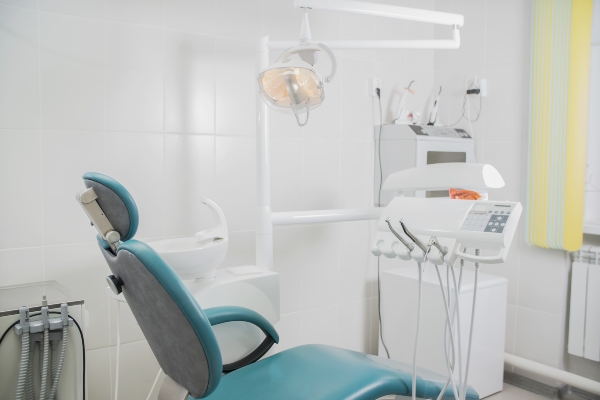The Difference Between a Restorative Dentist and a Cosmetic Dentist

A restorative dentist is typically a general dentist whom a patient sees when looking to improve oral health and function by repairing and replacing teeth. A cosmetic dentist, who may also be a general dentist, works to enhance the smile's appearance by improving the color, shape, and alignment of teeth. While both aim to create healthier smiles, their approaches and treatment goals differ. Knowing these distinctions can help patients choose the right dentist for their needs.
What a restorative dentist does
The main goal of a restorative dentist is to repair damaged teeth and replace missing ones. Restorative treatments help restore the function of teeth, allowing patients to chew, speak, and maintain proper oral health. These treatments also help prevent further dental problems. Common treatments provided by a restorative dentist include:
- Dental fillings. Used to repair cavities and prevent decay from spreading.
- Crowns. Placed over a damaged tooth to restore its strength and function.
- Bridges. Used to replace one or more missing teeth by anchoring to neighboring teeth.
- Dentures. Removable replacements for missing teeth that restore function and appearance.
- Dental implants. Permanent tooth replacements that provide stability and prevent bone loss.
These treatments are essential for maintaining oral health. When a damaged or missing tooth is left untreated, it can lead to more serious issues such as infections, bone loss, and difficulty eating. A restorative dentist helps patients maintain a fully functional smile.
What a cosmetic dentist does
Improving how a smile looks is the focus of a cosmetic dentist. While some cosmetic treatments may restore function, a smile's aesthetics is their focus. Many choose cosmetic treatments to correct stains, chips, gaps, or misaligned teeth. Common cosmetic treatments include:
- Dental veneers. Thin shells placed over the front of teeth to improve their shape and color.
- Dental bonding. Tooth-colored resin that repairs chips, cracks, or gaps.
- Gum contouring. Shapes the gum line to improve the balance of the smile.
A dentist's goal with cosmetic treatments is to create a brighter and more balanced smile to help boost a patient's confidence in their smile. Though they can also offer restorative benefits, this is not their main objective.
When to visit a restorative dentist
A person should visit a restorative dentist when a damaged or missing tooth affects their ability to chew or speak. Cracks, decay, or infections should be addressed promptly to prevent complications. Signs that may indicate the need for restorative treatment include tooth pain or sensitivity, difficulty chewing, a missing or loose tooth, a broken or chipped tooth, or visible decay, such as dark spots or holes. A restorative dentist can diagnose and treat these concerns, enhancing both function and appearance. Seeking treatment as soon as possible can reduce the likelihood of requiring more extensive procedures in the future.
When a cosmetic dentist is a better fit
Those who feel self-conscious about their teeth and want to enhance their smile's appearance should visit a cosmetic dentist who provides treatments like veneers, bonding, and gum contouring. These procedures can improve tooth color, shape, and the balance between teeth and the gum line. Common reasons for seeking cosmetic dentistry include the desire for a whiter smile, removing or covering stains, repairing minor chips or cracks, closing small gaps, and enhancing the overall shape and symmetry of the smile. While not always necessary for oral health, cosmetic treatments can significantly boost confidence and self-esteem, helping individuals achieve a brighter, more even smile.
Can a dentist provide both restorative and cosmetic treatments?
Some dentists offer both restorative and cosmetic treatments. Since many restorative procedures also improve the appearance of teeth, there can be some overlap. For example, a dental crown restores a damaged tooth's function while also improving its shape and color. Dental bonding can also repair a chipped tooth while enhancing its look.
A dentist will determine whether restorative or cosmetic treatments are needed based on a patient's goals and oral health. In some cases, addressing underlying dental issues with restorative care before cosmetic enhancements can lead to better, longer-lasting results. A combination of both may provide the best outcome.
Choosing the right dental care
A restorative dentist focuses on fixing and replacing teeth to improve function, while a cosmetic dentist works to enhance the smile's appearance. Both types of care are important for maintaining oral health and confidence. Not sure which treatment is right for you? Call us today to schedule a consultation to discover the treatment plan that is right for you.
Request an appointment here: https://bcdentalneedham.com or call Brede Ciapciak Dental at (781) 443-8134 for an appointment in our Needham office.
Check out what others are saying about our dental services on Yelp: Restorative Dentistry in Needham, MA.
Recent Posts
A restorative dentist can bring back your smile and dental function. You should consult this dentist first before your treatments begin. That way, you will know what the procedures will entail. Here are some of the things to expect during your consultation with your dentist.Some restorative dental treatments are invasive. This may cause anxiety in…
A dental restoration is administered by dentists to help patients repair teeth that have become damaged from injuries or cavities. There are a lot of different dental restoration options, each benefiting patients in different ways. Knowing which procedure is best requires careful consideration and the assistance of a dentist. Ready to learn more?The following information…
Direct and indirect dental restorations are the two types of restorations available. When your teeth are broken, chipped, decayed or cracked, dental restoration procedures restore the teeth to their original state. The choice of the type of restoration depends on the nature and severity of the tooth problem.Read on to find out the main differences…
Considering a smile makeover and not sure where to start? Read on to learn more. Many people avoid smiling due to dental imperfections. A smile makeover may be the answer. A dentist can improve your smile with cosmetic procedures like teeth whitening, bonding, and veneers. The right professional for the treatment is the key to…


